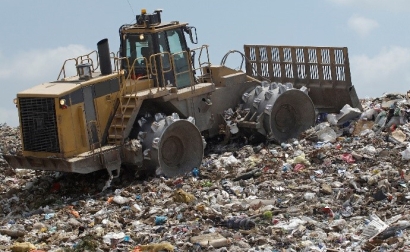
Metal recycling plays a big part. Though it can’t undo the damage caused by mining and refining, breaking down and reusing metals like lithium, cobalt and steel offsets some of their environmental impact.
Solar panels have a life span of approximately 25-30 years, but currently, less than 1% of them are recycled when they break or finally stop working. That’s a shame, considering they’re made mostly of glass and aluminum, two easily recyclable materials. They also contain rare earth metals that could be reused in other renewable energy products.
Wind turbines are mainly composed of metals, but the blades also contain plastic and fiberglass components, making them a headache for manufacturers to recycle. Until 100% recyclable models are widely adopted, wind turbine blades are, at best, repurposed for uses like roadside shelters or building materials. At worst, they end up in landfills.
The main reason most of the metals from renewable energy sources don’t get recycled is that it’s too complicated and labor-intensive to justify the expense.
Take the lithium-ion batteries used in EVs, for example. Only around 5% of them get recycled. This paltry figure is due to the difficulty of reclaiming the lithium, nickel and cobalt inside — the collection, transportation, neutralization, battery chemistry sorting, smelting and purifying of the metals costs more than it’s worth.
That’s because, like most renewable energy sources, EV batteries are made with energy efficiency in mind, not ease of recycling. Their internal components are welded together and difficult to take apart. Additionally, many countries aren’t yet equipped to recycle the large amounts of renewable energy components coming their way — even if they have metal recycling facilities — so a significant amount goes to landfill.
To have truly renewable energy, products must fit into the model of a circular economy. Planned obsolescence must be phased out in favor of building fully recyclable products with long lives. By 2050, around eighty million metric tons of solar panels will reach the end of their life span. That’s a staggering amount of glass and metal, and it has to go somewhere.
Not only would keeping it out of landfills be good for the environment, but it would also be good for manufacturers. If scientists can develop a viable way of recycling spent solar panels, wind turbines and electric car batteries, manufacturers will incur fewer mining, processing and manufacturing costs. This could also lower the overall cost of renewable energy for consumers.
Some companies have already developed state-of-the-art metal recycling processes, and the technology is getting more refined every day. It’s simply a matter of scaling up the recycling industry to handle the volume of products coming in.
In addition, renewable energy parts can often be repurposed. For example, when an electric car reaches the end of its life span, its battery can still be used for solar energy storage.
Another crucial component of the renewable energy transition will be to build energy sources from more common elements. Lithium, cobalt, nickel and rare earth metals are dangerous and often ecologically disastrous to mine. Instead, EV batteries powered by saltwater or iron and vanadium could be viable alternatives.
Until metal recycling becomes economically feasible, researchers should emphasize extending product life span. The longer a product’s life, the fewer materials needed in the industry overall, and the longer it will be before the item has to be recycled. They should also look for more common materials with which to build the products.
And, as always, people should do their best to cut down on their overall energy consumption. That’s a tough pill to swallow, but it’s the driving force behind the massive amounts of waste that need to be recycled.

